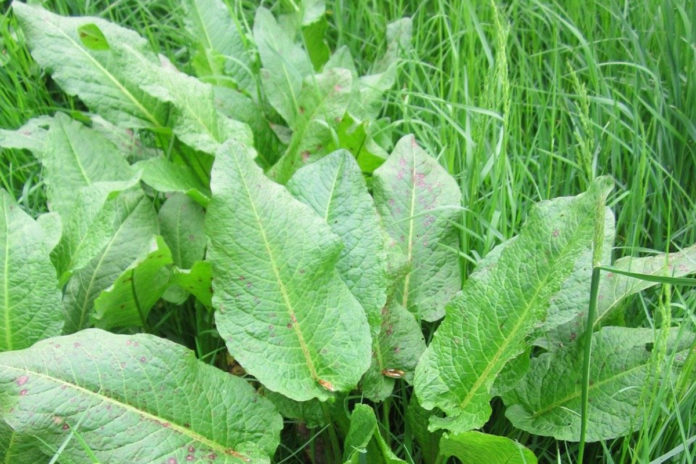Whether it’s the terrible plight of Covid-19 or a field of dock leaves, no farmer wants either this spring and prevention is definitely better than cure in relation to both, writes Keith Fahy, B&T Drystock Adviser, Teagasc, Galway/Clare.
So why is it that dock leaves are so persistent especially this time of year?
Below I will discuss the different types of docks, root system, favourable growing conditions and ways of controlling docks.
Docks have the capability of producing over 60,000 seeds per mature plant and these seeds can survive for over 50 years in the soil and can germinate when they reach favourable conditions such as temperature, moisture and light etc.
Docks need to be controlled as they will reduce grass production; they are unpalatable and will reduce silage quality.
Types of Docks:
The two types of docks that farmers will encounter during their farming endeavours are the broad-leaved dock (Rumex Obtusifolius) and the curled dock (Rumex Crispus).
The broad-leaved dock has wider leaves; their breadth is half their length whereas the Curled Leaved Dock has a narrower leaf whereby the length of the dock leaf is three times longer than the breadth.
Below are examples of both types of docks:
Root System of Docks:
Dock leaves have a large branched tap root system that can penetrate deep into the soil. Taproots have a large surface area and the ability to take in large amounts of water and nutrients. These taproots can penetrate greater than a metre deep into the soil.
Favourable Conditions where Docks Thrive:
Dock leaves are usually a problem in very fertile soils or where the ground has been poached/damaged where there are open swards.
Paddocks poached in early spring and where slurry has been spread since will provide ideal growing conditions for docks as they will have more open areas to grow and have a high availability of potassium and nutrients.
Docks favour high index potassium (K) soils. Silage fields are generally the worst affected fields for docks and this is due to silage fields generally receiving high levels of K either through large volumes of slurry/dung or where compound fertilisers high in K have been spread, e.g. 0-7-30.
Controlling Docks:
Before spraying docks, farmers must look at why some fields are worse for docks than others and how docks can be prevented etc.
Keeping a thick, dense and leafy sward will reduce or even eliminate docks as the grass will out-compete the docks for space, light and nutrients.
Topping and grazing tight swards will also help improve the density of regrowth of grass thus reducing dock populations.
Spraying
When spraying for docks it is essential that you use the correct product, at the correct rate and at the correct time.
Always spray when the docks are green, growing and are at the rosette stage. Avoid spraying on windy days etc.
There are many different products and ingredients to consider when deciding what sprays to use. Being in contact with farmers over the last few weeks I have heard farmers using an array of different products to control docks, some of these include Dockstar Pro Fore Front T, Pasture Pack, and Hurler.
Some of the main active ingredients to look out for when controlling docks are dicamba, triclopyr and fluroxypyr.
Always ensure product labels are read correctly, that enough water is used to ensure there is enough contact with the targeted species and that only licensed and authorised sprayers and users are used.
Always triple rinse containers and avoid spraying when rain is promised within 48 hours. Keep up to date records of pesticide usage on the farm.





